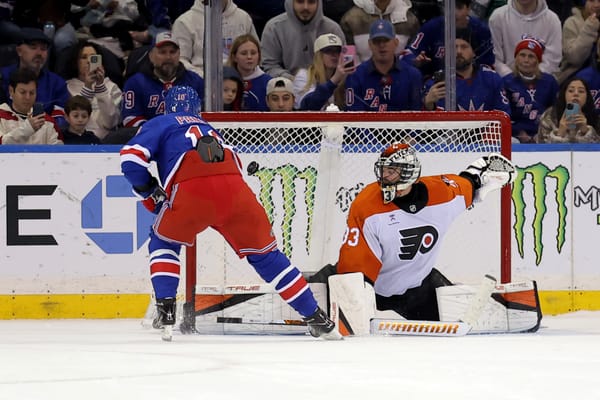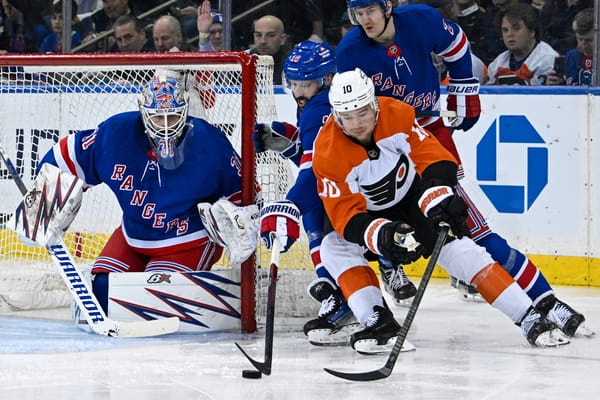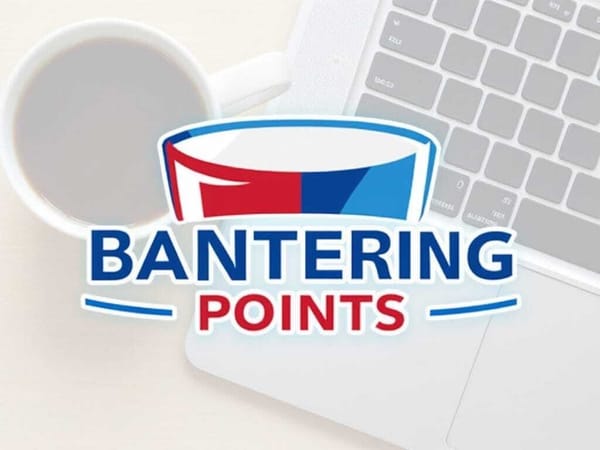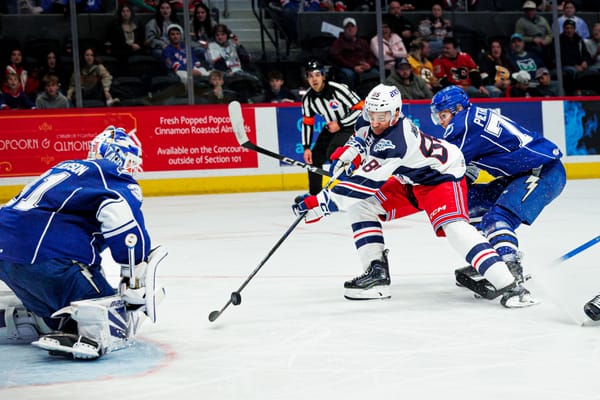The Risks and Rewards of Jack Eichel
The Rangers have an opportunity to fill a need the team has had for decades, but there are risks involved
You might not have heard this but, apparently, the Buffalo Sabres are looking to trade 24-year old superstar center Jack Eichel. For some reason, no one has talked or speculated about this incessantly for weeks and months on end, and everything surrounding the situation has been rather amicable between team, player, and fanbase.
Now, with all of that preamble nonsense out of the way, we can get down to reality. The Eichel trade situation has been a circus from the get-go as the young center became increasingly frustrated by the lack of team success in Buffalo before the season even began.
Eichel’s Lost Last Season
General Manager and Man-that-Cannot-Spell-His-Own-Name-Correctly, ‘Kevyn’ Adams sought to improve a Sabres roster that had some holes, notably getting some scoring help for Eichel, fellow young center Sam Reinhart, and high scoring winger Jeff Skinner. That help came in the form of signing Taylor Hall to a one-year, $8 million contract and bringing in veteran and versatile forward Eric Staal. The Sabres looked like a team that might actually do something positive for the first time since they drafted Eichel 2nd overall in 2015.
Then the 2020-21 season happened.
Taylor Hall never quite found his groove offensively and head coach Ralph Kreuger bafflingly moved Jeff Skinner off of Eichel’s wing after the duo had such a successful and productive season a year prior. By the end of February, things were dire in Western New York as it appeared that this season, with all of the promise it had at the start, was falling into an all too familiar rut.
To make matters worse, Eichel, with two goals and 16 assists in 22 games played at that point, was sidelined with what was then labeled a “lower-body” injury that was then upgraded to a herniated disk in his neck that ended his season prematurely. As Eichel sat, the Sabres lost, continued to lose, and lost even more than that, picking up only a single win in the month of March after losing an NHL record 18 games in a row.
As the season wore on in Buffalo, the rumblings and rumors about Eichel’s future in the Queen City ramped up. Things heated up when Buffalo admitted defeat and started selling off its parts, sending Eric Staal to the Montreal Canadiens and Taylor Hall, arguably the prize of the trade deadline, to the Boston Bruins for Anders Bjork and a 2021 2nd-round pick. The season ended with the Sabres sitting dead last in the league, picking up just 37 points in 57 games and winning the Draft Lottery allowing Buffalo to pick 1st overall for the first time since...2018, when they selected Rasmus Dahlin.
Throughout all of this, the Eichel trade rumors persisted and whenever there is a star player reportedly requesting a trade or shopped by a team, you know the Rangers are going to be involved. There were all kinds of speculation over the package of players it might take to acquire the disgruntled star with early rumors centered around the Sabres needing one or both of Kaapo Kakko and Alexis Lafrenière to get the Massachusetts native on Broadway. Things changed, though, when it was revealed that Eichel had a herniated disc in his neck that might require surgery.
Eichel sought out neurosurgeons and spinal experts who recommended an artificial disc replacement procedure and the Sabres, reportedly, recommended rest and rehab for the herniated disc. Needless to say, things are not going smoothly in Buffalo but the Sabres’ GM remains adamant that he knows what he’s doing.
“We’re in control of this process,” Sabres GM Kevyn Adams said of Jack Eichel trade talks. “We don’t feel any pressure.” https://t.co/cfoKs0C9dg
— John Vogl (@BuffaloVogl) July 30, 2021
The Eichel camp, understandably, disagrees with that assessment and stated their side of the situation with a rather damning public statement.
Jack Eichel’s agents issue the following statement: pic.twitter.com/tiPXShdchz
— John Vogl (@BuffaloVogl) July 31, 2021
Neck on the Line
This is where we sit today as Jack Eichel’s relationship with the Sabres is hanging on by the barest of threads and the Sabres are digging in their heels on trying to find the best possible package for their foundational center. The Rangers, until otherwise stated, remain in the hunt for the center. He checks off a lot of boxes for New York but that doesn’t mean there’s a fit here. So, the big question is whether the Rangers should trade for him given what we know about Eichel’s injury and his messy divorce in Buffalo.
The short answer is “yes,” but there needs to be a deeper dive into the situation, looking first at the risks of trading for the player and the potential rewards that he could bring to the Blueshirts.
First, let’s take a look at the risks involved with trading for Eichel starting with the standard risks of any trade; the cost in assets. Let’s be clear with what we are talking about here as Jack Eichel, when healthy (which we will get to in a moment) is a top-five player in the league and is a player the likes of which the Rangers have not had in arguably in their entire history: a bona fide elite young center that you can build around. In a vacuum, Eichel is a player that a team should do everything in their power to keep happy, failing that they should be doing everything in their power to get a king’s ransom in assets in any trade. Kevyn Adams, again in a vacuum, is not out of his mind to ask for premium young assets like Kakko or Lafrenière in return for Eichel, again we will address the context in a bit. The Rangers trading for Eichel will most assuredly require three or four assets, probably including a 1st round pick and young players such as Filip Chytil, Vitali Kravtsov, and/or the likes of Zac Jones, Braden Schneider, or Nils Lundkvist.
On top of the cost of acquisition, Eichel would be coming to the Rangers with a rather hefty contract that carries a $10 million AAV for the next five years and a No-Movement Clause that kicks in during the 2022-23 season. Eichel is worth that cap hit but adding him to the books would force the Rangers to make tough decisions with other players, notably center Mika Zibanejad who needs a new contract. Adding Eichel to the Rangers’ roster, especially in a flat cap world for the next couple of seasons, could make things rather tight going forward.
So, those are the immediate cost risks of trading for Eichel, now to talk about the herniated elephant in the room, the surgery that the 24-year old center wants to have to address the herniated disc in his neck. I think I should mention at this point that I am by no means any kind of medical expert and that the information I am about to give stems from personal research and a reliance on opinions from medical professionals.
First, I think we should define what is currently ailing Eichel as he has a herniated disc in his neck. As defined by the Mayo Clinic: “A spinal disk has a soft, jellylike center (nucleus) encased in a tougher, rubbery exterior (annulus). Sometimes called a slipped disk or a ruptured disk, a herniated disk occurs when some of the nucleus pushes out through a tear in the annulus.” Basically, the cushion that sits between the vertebrae in Eichel’s neck has slipped out of place and is pinning the nerves of spine, leading to pain, discomfort, and a lack of mobility. Any issues dealing with someone’s neck or spinal cord should be taken with the utmost seriousness and care, which is why Eichel sought out the opinions of professionals on how to correct the issue.
There are two generally accepted methods for surgically correcting this issue, one of which is a spinal disc fusion procedure which entails removing the affected disc, inserting a graft, and supporting the spinal bones with screws to “fuse” the two bones together into one. Like any surgical procedure, there are risks involved here, such as a diminished range of motion following the surgery and the fact that the supports for the vertebrae degrade over time and require another procedure to replace them down the line. The surgery also averages a multiple-month recovery process that involves as much rest and as little movement as possible.
The solution that Eichel settled on, again according to his agents, is an artificial disc replacement procedure which is exactly what it sounds like. Surgeons go into the neck area, remove the herniated or damaged disc, and replace it with an artificial disc. It is a relatively simple procedure and patients that require the surgery usually stay in the hospital for a couple of days at most. The procedure is a relatively new one, compared to a spinal fusion, and is rather controversial in the hockey world because of this. There have been fewer of these ADR surgeries performed on professional athletes compared to the fusion procedure so there is a lack of cases to fall back on, though even with the lack of cases, there are notable successes in professional athletes that play contact sports like MMA and American football, with patients being able to fully return to their sports in a shorter amount of time.
For an even better understanding of the differences between the procedures and the risks involved, I highly recommend this episode of Sportsnet’s 31 Thoughts podcast with Jeff Marek and Elliotte Freidman, which features Dr. Chad Prusmack, the Colorado physician who recommended the ADR procedure to Eichel.
31 Thoughts Podcast 🏒
— Sportsnet (@Sportsnet) July 31, 2021
Dr. Chad Prusmack, the neurosurgeon who has provided Jack Eichel with a recommendation to correct a herniated disc in his neck, joins @JeffMarek & @FriedgeHNIC to discuss the procedure.
🎧: https://t.co/9kZPsrJHn3
Presented by @GMCcanada. #GMCSierra #AT4 pic.twitter.com/sAeDJd5q58
No matter what procedure Eichel undergoes, there will be a period of recovery involved, the difference is between a potential four-to-five month recovery with diminished mobility in the neck and a two-to-three month recovery with a better chance of maintaining full mobility even in a high contact environment.
One of the major issues at play here, that is brought up right off the bat on the podcast, is that, according to the CBA, Jack Eichel does not have the final say in what surgery he gets to fix the herniated disc in his neck. This is the lynchpin in the whole issue, the Sabres recommended rest and rehabilitation and when that did not work to alleviate the issue, the team doctors recommended the fusion procedure over the ADR that Eichel and his camp want. I am not going to open up the can of worms that is the Sabres holding Eichel’s health hostage while they try to get the best possible package back in a trade, nor am I going to harp on Adams negotiating in bad faith by allegedly withholding Eichel’s medical records from teams negotiating with the Sabres General Manager.
Now while there are risks involved with trading for Jack Eichel, especially surrounding the surgery to his neck, there are some very clear and obvious rewards for the Rangers. Quite simply; the New York Rangers have not had a talent of Eichel’s caliber that is also at the peak of their career in decades, if ever. Eichel is a premier talent in the NHL. In his 375 career games in Buffalo, Eichel has put up 139 goals and 355 points, good for .94 Pts/GP and beyond the simple goals and points, Eichel has been worth 61.9 GAR and 11.5 WAR, according to Evolving-Hockey.com. Eichel did all of this before his 25th birthday and while playing on and leading some really bad teams. Oftentimes, Eichel was a man alone on the ice and still managed to drive play both at 5-on-5 and on the power play.
No matter how you slice it, the Rangers adding Eichel would be a massive boost and with everything going on between the Sabres and the big center, any leverage that Adams has here dwindles by the day and the package that it would take to get Eichel in Manhattan gets less and less costly.
Now, while Kevyn Adams and the Sabres look to burn all of the negotiating leverage they have left, the Rangers still have to ante up a considerable package of assets to acquire Eichel’s services. The odds are good that the foundational pieces like Kakko and Lafrenière are no longer on the table and the Rangers because of the assumed lowered acquisition cost, the Rangers can draw on their vast pool of defensive prospects to build a trade package. Adding Eichel to those two young talents, as well as Artemiy Panarin and Mika Zibanejad, could help give the Rangers the boost they need to fulfill the mandate laid down by owner James Dolan to make the playoffs.
If this all breaks the right way, it could be a massive step towards making the Blueshirts a Cup competitor sooner rather than later.




